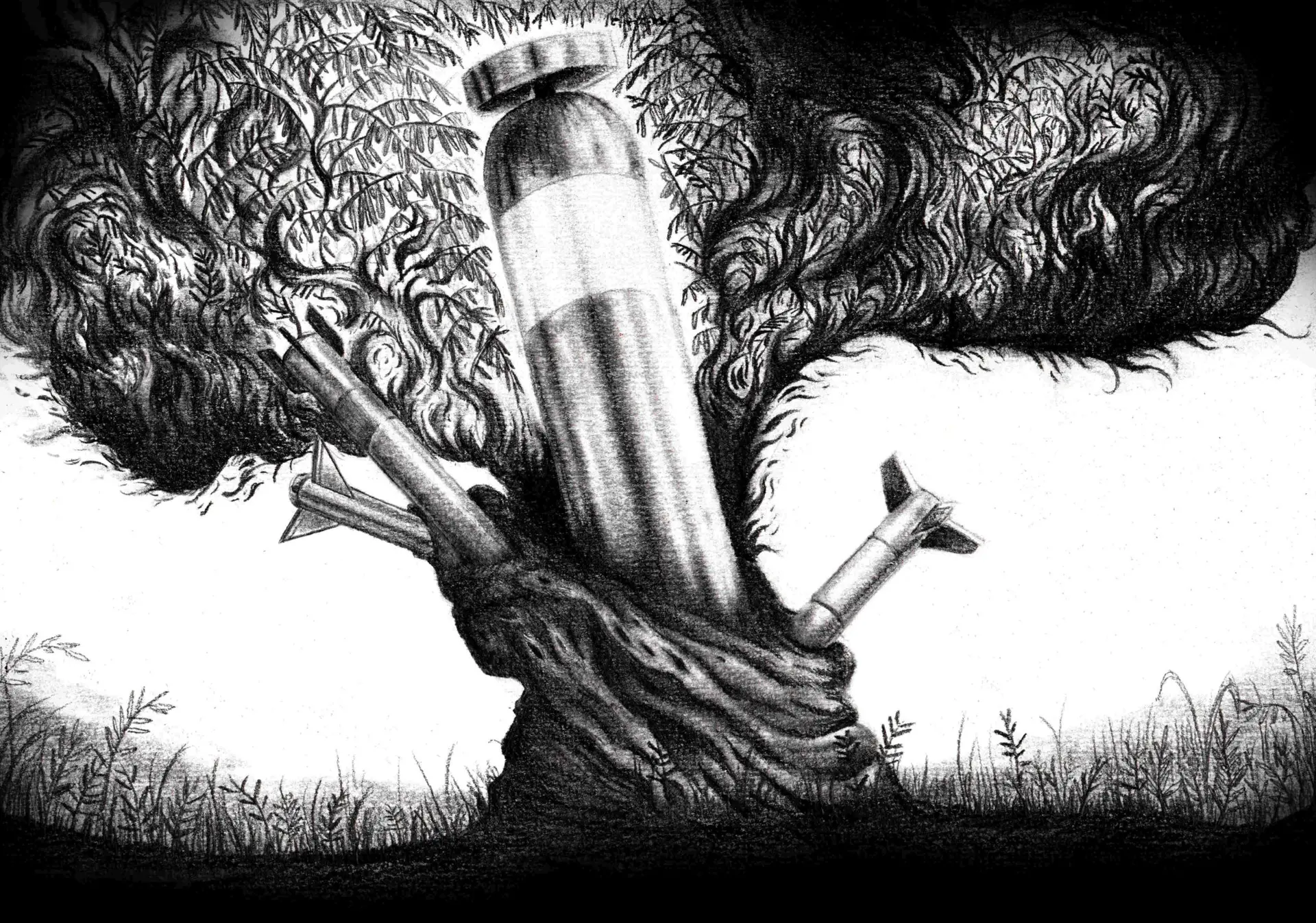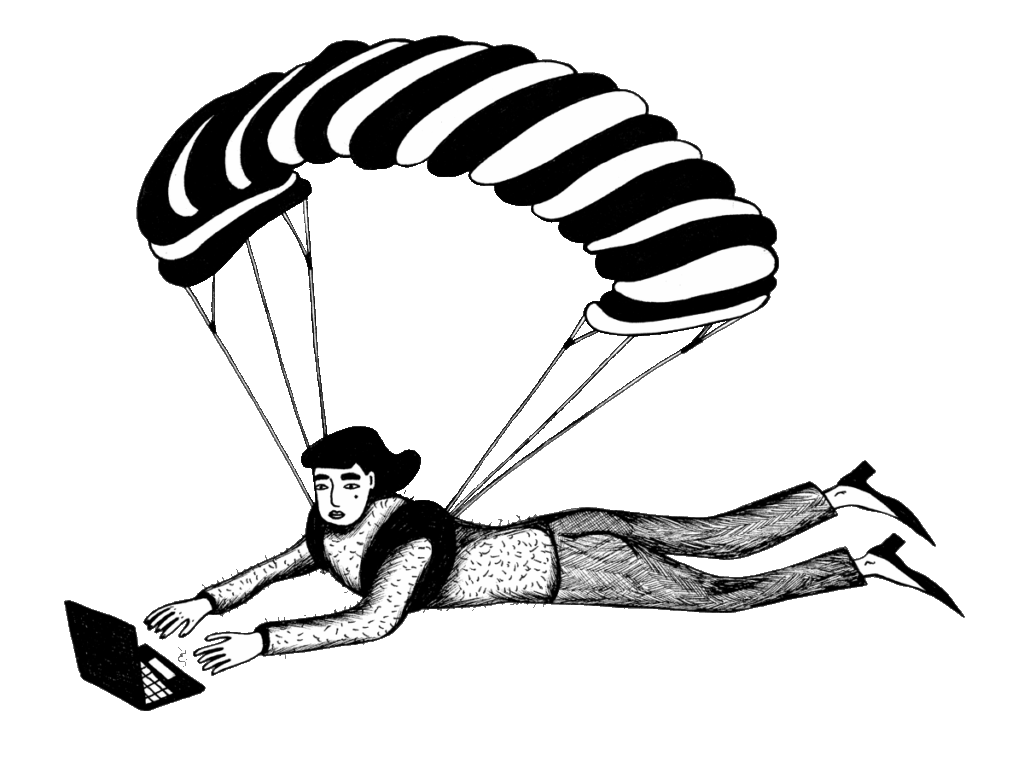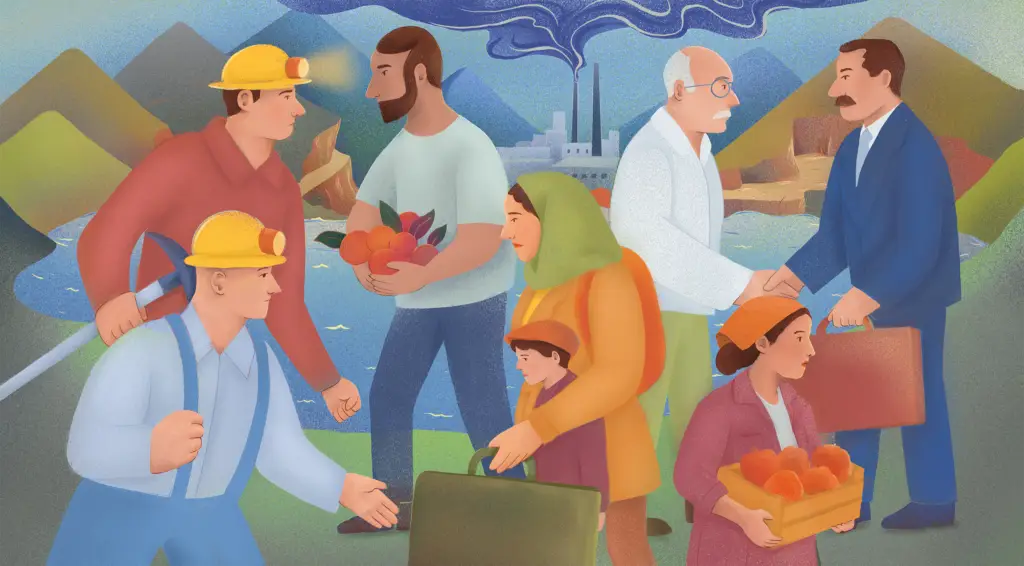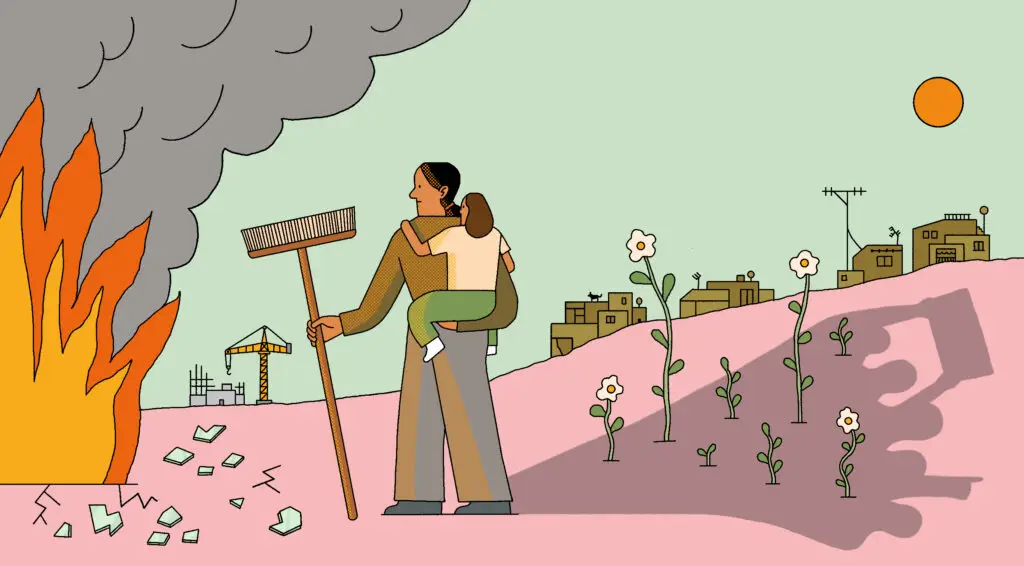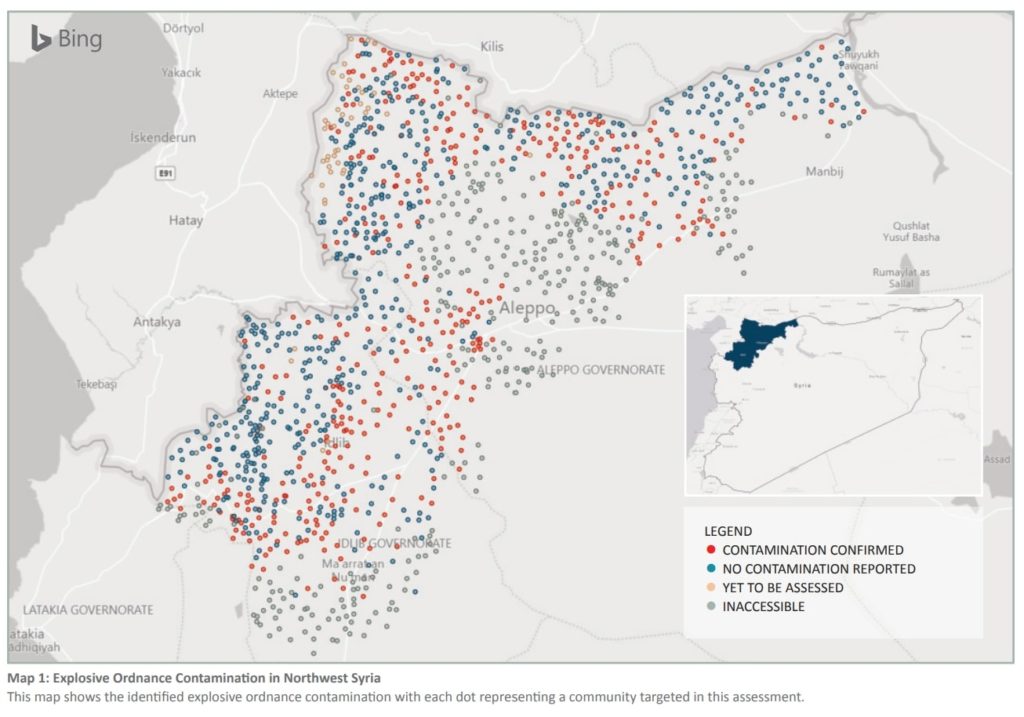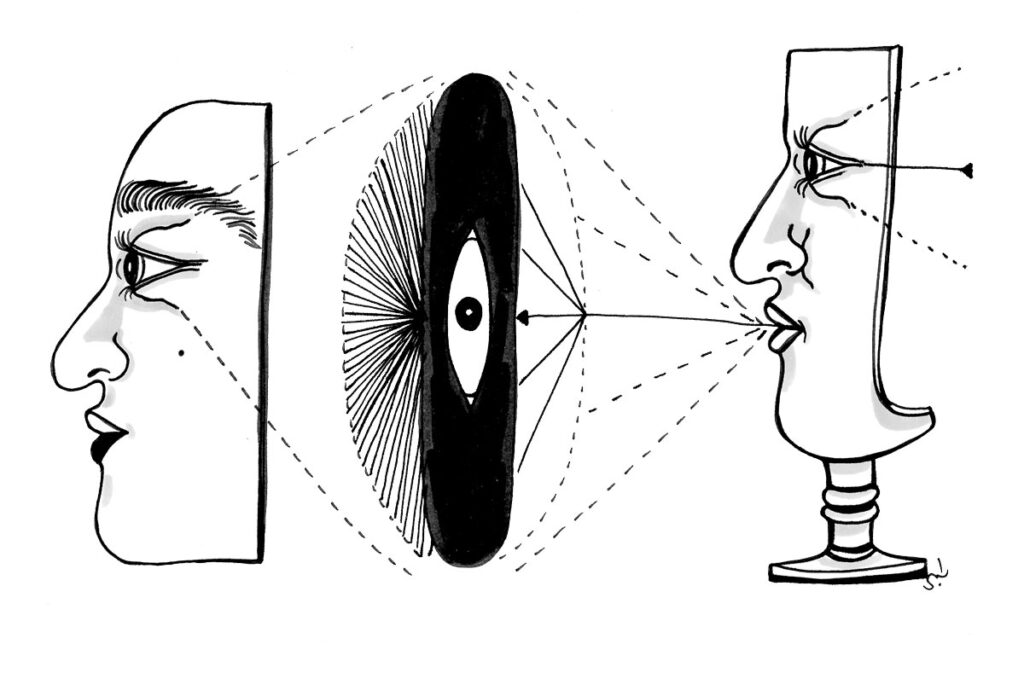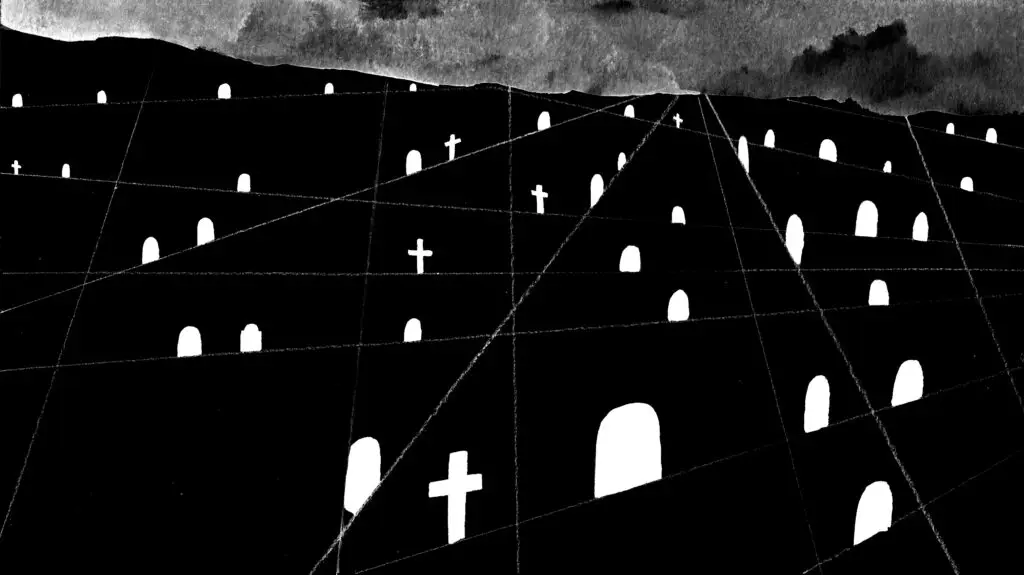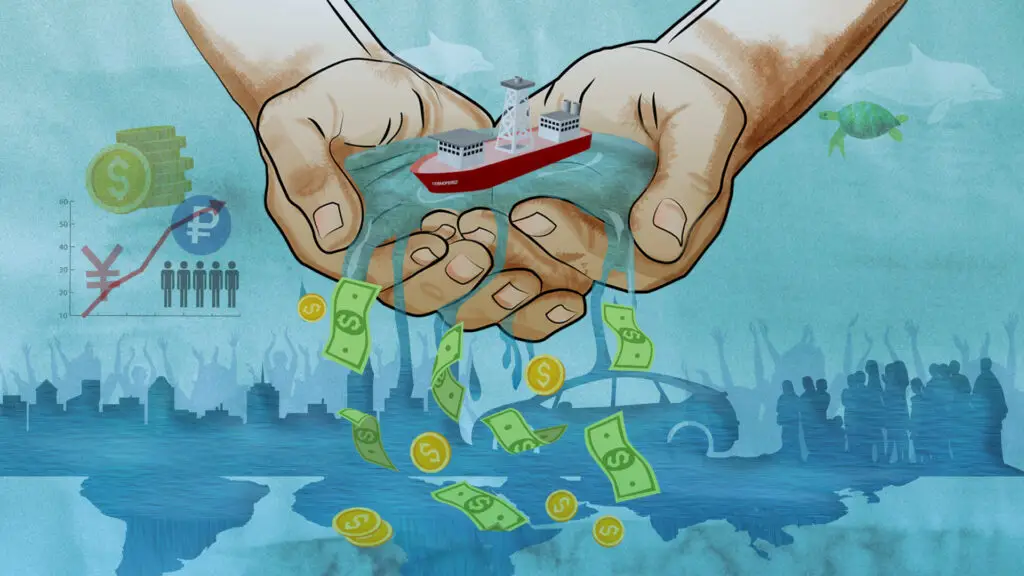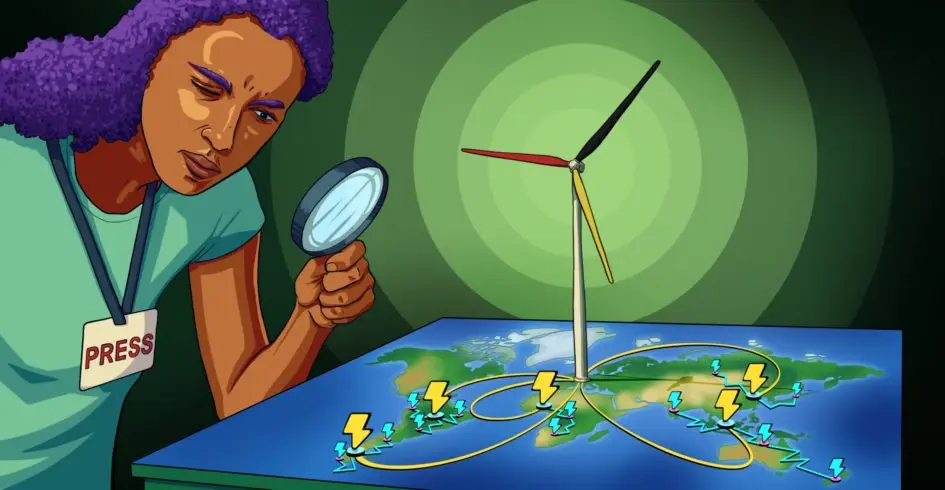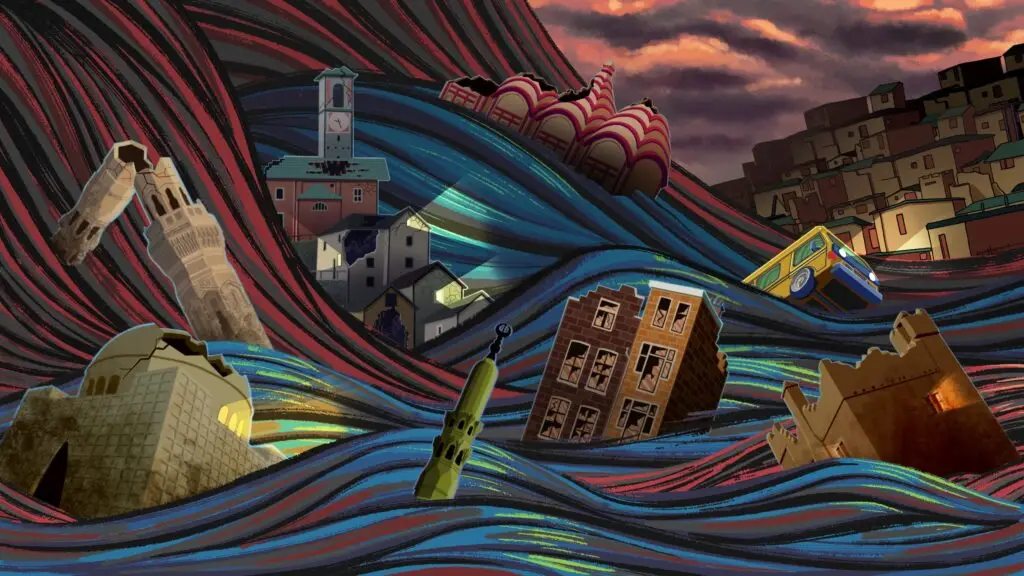“I heard the noise of a scouting plane… It was so close. I knew it was going to fall down, but I did not imagine it would crash into my farmland,” says Amin*, who rushed at the time to see the flames devouring his land.
He started immediately to put out the flames to be joined shortly by his neighbours and some passersby. The Civil Defence (the white helmets in Syria) finally arrived and put out the fires.
Amin lost some of his trees, the parsley crop, and the herbs he grew in the greenhouses.
Later, the international military news website Military Times published a report quoting a US defence official as saying that the crash was caused by two drones, “MQ-9 Reapers”, belonging to coalition forces against Daesh near the villages of Salqin and Kafr Takharim, western Idlib.
Since the crash of the drones in October 2020 and until now, the soil of this area is black and unfit for cultivation, despite Amin’s repeated attempts to till the soil.
Amin’s is just one of the latest stories of how the international and local actors in Syria’s civil war have harmed the land and agricultural system of the country in ways that continue to unfold.
In this investigation, we monitored the impact of the war that has been waged in Syria for the past decade, on land in an area that is still the epicenter of the conflict, stretching from the countryside of Aleppo to the eastern countryside of Idlib.
Besides the severe impact of the war on the daily lives of civilians, this investigation tracked and monitored the environmental footprint of the armed conflict and weapons on agricultural land, trees and soil in particular.
Local farmers told us stories about their land and the daily losses they are enduring through the long years of this poisonous war.
We looked into four locations that were affected by military operations, either because they were directly targeted using weapons, transformed into a headquarters for military training, or burned because of bombing and military clashes.
Layers of environmental problems
The main environmental issues in pre-war Syria were centred around deforestation, overgrazing and soil erosion, as well as desertification and water pollution caused by sewage dumping and waste from oil refining.
Insufficient drinking water supplies and long-standing drought were additional problems that have hindered the country’s economic development, according to a report issued by the Pax Foundation for Peace, a Dutch NGO. But who are the key players now, and what are the new environmental challenges added to the previous ones?
During ten years of war in Syria, all parties involved in the armed conflict have used military equipment of various types, both modern and old, on the ground, in the water, and in the sky. Land was expropriated for military control, trees were cut down, and deadly experimental weapons were dropped on civilian and agricultural areas.
The social and economic system was severely affected. The harsh life conditions forced people to cultivate their affected lands despite it being burnt, or contaminated by exploded or unexploded bombs. They needed to collect water, graze livestock, and gather firewood with no protection.
The effects are ongoing.
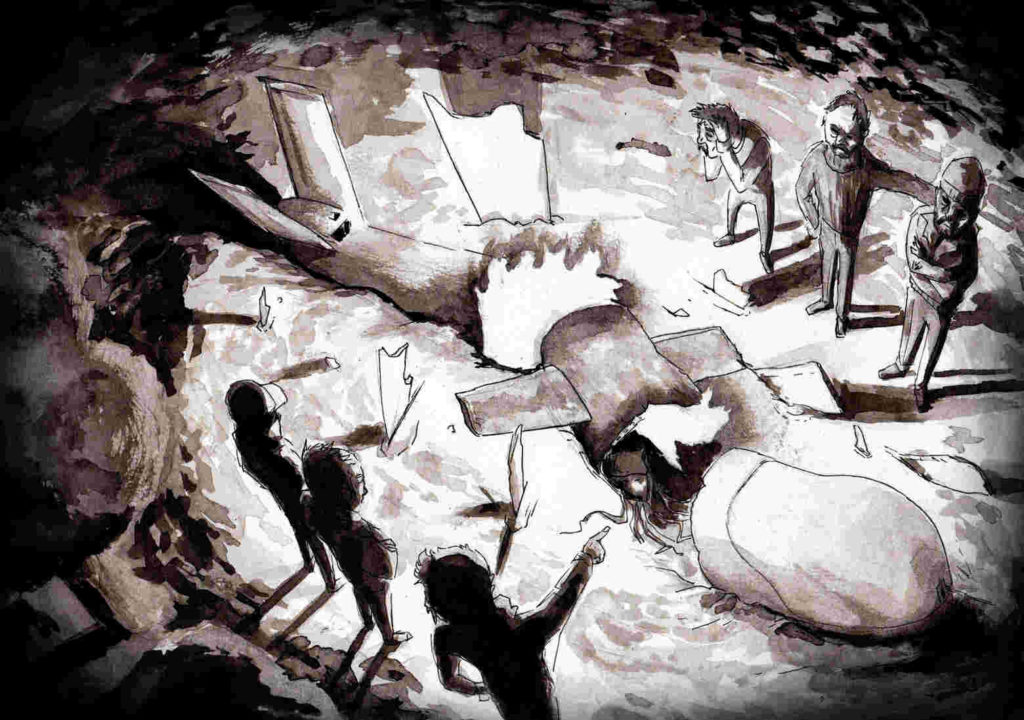
Death from above as free advertisement
Russia’s involvement in the Syrian conflict to aid the government involved the use of air strikes and numerous weapons it had never inflicted on a population before.
The experimentation began in 2015, when Moscow used new weapons and military equipment in Syria, including Mi-28NE Night Hunter attack helicopters, fifth generation SU-57 fighters, Pantsir-S2 air defence systems, Terminator-2 armoured vehicles known as “the Destroyer Beast”, Uran-9 tracked unmanned combat ground vehicles, smart bombs, and the TOS-1A heavy flamethrower system. These are mostly medium to heavy weapons and have great destructive power.
In 2016, Russia brought in four SU-35s followed by SU-55 and SU-27 fighters to test for the first time. Sergey Chemezov, CEO of Russia’s state-owned defense conglomerate Rostec, told Defense news in a simultaneously translated interview: “Current military activities against Islamic State, “ISIL”, which Russia is currently undertaking in Syria has demonstrated our capabilities and potential of this technology … and they were quite positive for our sales.” Russia categorised all the rebel zones as related to terrorists and ISIS.
Chemezov described the operation as "advertisement free of charge" for Russian-made ships, planes and missile equipment.
Sputnik reiterated at the time that these aircraft have proven their capabilities in Syria, and that Russia’s military activity with the missile group in Syria was free advertisement for Russian defense equipment.
Russia claimed they tested 210 different weapons in 2018. According to Russia’s Defence Minister Sergei Shoigu, the Russian Armed Forces have gained huge experience in Syria.
Experimental Outcomes
The opposition accuses the Syrian regime, and its allies, of causing damage to agricultural soils in Idlib countryside and northern Hama.
In a communication via Whatsapp, the Deputy Minister of the Local Administration for Services and Agriculture in the Syrian Interim Government, Nazih Kaddah, told Unbias the News: “As a result of the war waged by Russia and the Syrian regime forces, large areas of fertile agricultural land have been damaged.”
Kaddah told TRT Arabic last April that “the agricultural sector has been significantly affected, like other economic sectors, because of the war waged by the Assad regime and its ally Russia in the region.”
He stated that the areas that are not under the Syrian regime’s control have lost large areas of fertile agricultural land, in addition to large areas leaving the scope of agricultural investment because of their proximity to the seam areas, the spread of mines, the displacement of most of their residents, and the reluctance of many farmers to cultivate their lands.
He pointed out that agricultural soil was directly damaged as a result of the bombing with toxic and internationally prohibited chemicals.
From Irrigated to Rainfed
In addition to the bulldozing and burning of large areas of agricultural and wooded lands, much of the irrigated lands were transformed into rainfed conditions because of the destruction of irrigation projects or the cutting off of water, coinciding with the high costs of extracting groundwater due to the high prices of fuels.
Rainfed agriculture relies entirely on rainfall for water. This often makes it more susceptible than irrigated agriculture to irregular weather patterns, drought, evaporation. With increased drought or weather unpredictability, people relying on rainfall for their crops are more vulnerable to climate change.
According to the International Institute for Water Management, rainfed conditions “accounts for more than 95% of farmed land in sub-Saharan Africa; 90% in Latin America; 75% in the Near East and North Africa; 65% in East Asia; and 60% in South Asia.” These areas tend to be at more risk for food shortages and poverty.
Kaddah noted the significant increase in the prices of agricultural production inputs and their scarcity (fuels, pesticides, fertilisers, and various agricultural tools) and consequently the low productivity of cultivated crops, besides poor marketing capacity and high storage costs as additional factors harming agriculture.
A report we received from the Syrian Interim Government operating in the areas under the control of the Syrian opposition stated that about one hundred thousand hectares of fertile agricultural land were damaged due to the military attacks by Russia and the Syrian regime.
In a 2017 study, the Food and Agriculture Organisation (FAO) stated that the initial cost of rebuilding the agriculture sector over a three-year period was estimated at $10.7-17.1 billion in total, depending on changes in the conflict and the prospects for a partial or complete peaceful resolution.
Uprooted and destroyed
In the Afrin region of northern Syria, Ankara-backed Syrian opposition forces cut down around 280,000 olive trees and burned and uprooted other trees, some of which were more than sixty years old. The official number of damaged trees is not clear.
Journalist Muhammad Blou, a media activist and resident in the city of Al-Hasakah, told Unbias the News that the reasons for cutting down trees are multiple: some of them were used to sell wood and used as firewood inside Syria, and another part was exported to Turkey. There were thousands of olive trees that were cut on both sides of the old road that connects between Hama and the Turkish border to expand it and use it as an international road.
People made a living from these olive trees and their oil. In Ifrin, olives form a percentage of income for 70 percent of the population, according to Kurdish Violations Documentation Centre. But after displacement and the continuation of logging, this wealth is completely threatened with extinction.
The Violamilitarytions Documentation Center in Syria (VDC) also documented the cutting of thousands of olive trees, in addition to the unjust logging operations conducted by the opposition factions, reported Step Agency.
Blou says that a rare type of oak tree, or what is known as the Roman oak, was present in the Afrin region, and its number reached about dozens. It also became extinct due to its logging.
Media reported that the armed group Al-Amshat faction, affiliated with the Syrian National Army (opposition) was responsible for logging. In October 2020, the local council of Afrin city in Aleppo countryside decided to ban the sale, cutting, and its waste to any party for the purpose of woodcutting or trading, which coincided with the onset of winter, which usually witnesses the increase of woodcutting for the purpose of heating.
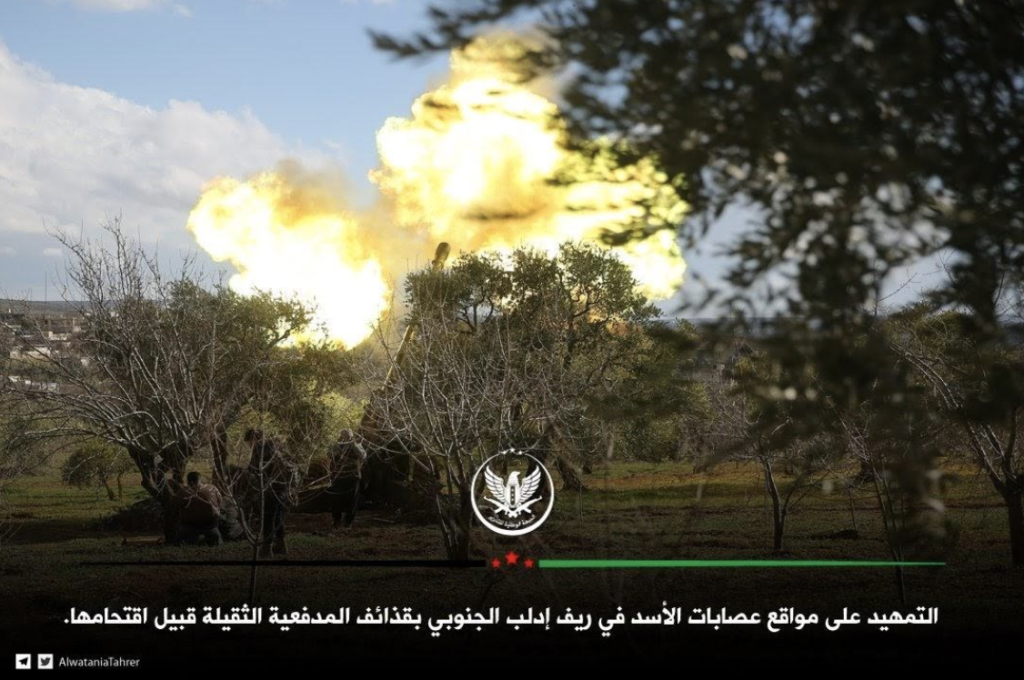
Rent and Destroy
Mustafa Fawaz says that the Turkish army rented a part of his land that is planted with pistachio trees in the town of Morek in Hama countryside, through the mediation of Faylaq Al-Sham (a local opposition faction fighting within the ranks of the Syrian National Army).
Fawaz said that he rented only 28 dunums (a dunum is 1000 square meters) and 600 square metres of his land, but he was surprised the next year that the Turkish army set up earth mounds beyond the length of the rented area without his knowledge, bulldozed an area of more than 40 dunums and uprooted many pistachio trees.
Images from Mustafa’s farm, showing damaged soil, uprooted trees, and remaining military structures. Pictures by Rozana.
He added: “Everything is clear and documented with pictures. The southern area of my land was planted with small trees that I photographed before renting the land, and I uprooted 76 trees in order to determine the point according to the agreement. However, a large number of trees were uprooted without my consent.”
They promised me, according to the contract, that they will compensate me for any damage they cause to the land and that they will restore everything as it was, but my land has become rocky.
The earth mounds in Mustafa’s land are five or six metres high, in addition to constructed high concrete walls that are difficult to remove. Most of the land has been razed until rocks became visible, which means that it would require large sums of money to be repaired.
Mustafa is now displaced from his village and sought refuge in another town in Idlib, Morek, and built a small house inside a camp for displaced people in the region. He lives through his work as a night watchman in one of the facilities in the area.
He sits in sorrow contemplating the land which is the source of his livelihood, awaiting justice, putting hope on the fact that the land now is controlled by the Syrian regime following the Astana agreement.
Turkey has established 122 military points, according to Jusoor Center for Studies, and in Hama, where Mustafa’s land is located, there is one observation point, which was built in 2018, but now it is under the control of the Syrian army.
Confiscate and Destroy
Mahmoud Abdel-Razzaq has a similar story. He told us that the Turkish forces established military posts in the agricultural lands in the village of Abyan Samaan (west of Aleppo), last March (2021).
Abdel-Razzaq used to grow wheat, nigella, and other grains before the Turkish forces turned part of his land into a military post without his permission.
“There was no lease contract, and we could not communicate with them. As civilians, we were not allowed to approach the military posts.”
- Mahmoud Abdel-Razzaq
Neither Mahmoud nor his neighbours, who own the adjacent lands, had a choice to refuse or agree. The Turkish forces bulldozed an area of two dunums out of ten dunums of his agricultural land and left behind them one year later a razed land, captured in the video below, which requires funds that Mahmoud can’t afford to repair and cultivate the area again.
During our follow-up to the investigation, we noticed a difference in the form of sabotage that was practised in the agricultural lands in which the Turkish observation points were stationed. That indicates there is no single systematic method adopted by the military, but rather that each military group accomplishes the work according to its understanding of how to carry out their mission.
Most of the front lines of military operations occurred in or around agricultural lands in Idlib, Ar-Raqqa, Hama, and Aleppo governorates. Furthermore, agricultural land in these regions was confiscated by parties to the conflict.
Scorched Earth
Human Rights Watch has documented the use of incendiary bombs by the Syrian regime and Russian warplanes during multiple raids over the past years.
It is prohibited to use incendiary weapons including napalm, white phosphorus and other weapons against civilians under the United Nations Protocol III on Certain Conventional Weapons (CCW), which Russia has signed, but the Syrian government has not.
While the protocol prohibits the use of weapons against civilians, it does not emphasise its toxic effects on agricultural soil or the environmental and human losses that result from using these arms.
Eoghan Darbyshire, an environmental scientist focusing on conflict and the environment, said, “It is not only the initial impact of the bomb that causes heat only in the soil, but there are also weapons that explode in the air, mines and many other munitions that can pollute the soil, whether biologically or chemically. As a result of the use of these weapons and the pollution of water resources, people will be harmed. The explosion of weapons or missile attacks causes air and land pollution, which leads to the pollution of agriculture.”
Saif* told us how his land was completely burned. He explained, “With the start of the wheat harvest season at the end of May (2021) particularly in Al-Ghab Plain area (the villages of Al-Ziyarah district), the Syrian regime forces began to bombard agricultural lands with artillery and rockets”, causing dozens of hectares to burn. The burning is even visible from images on Google Earth.
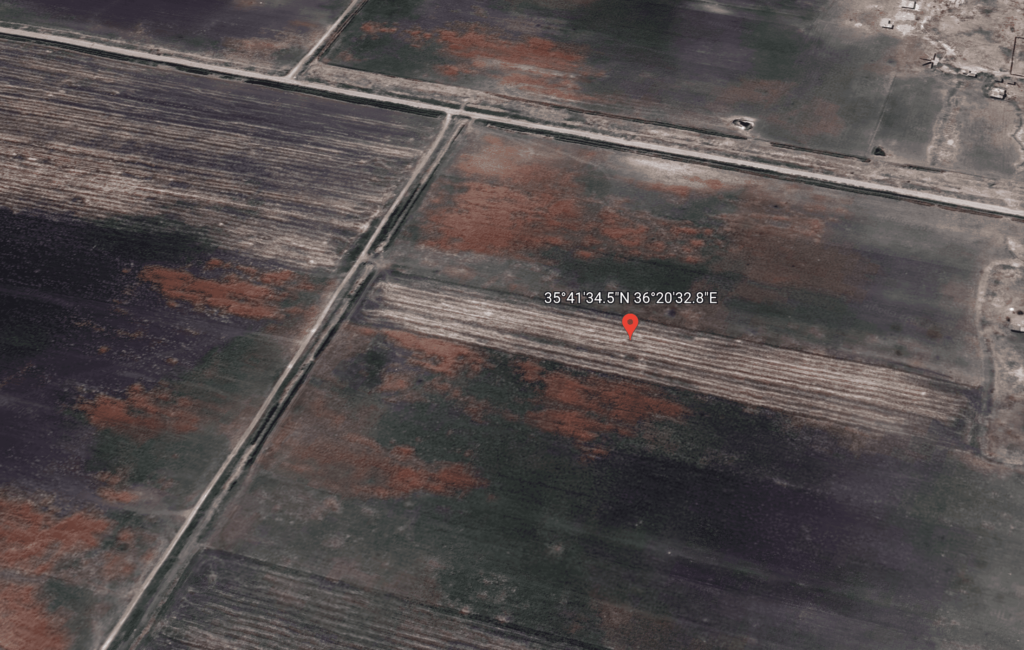
Mustafa Omar is another farmer whose land is affected. His land in the Hbit area, south of Idlib, was burned at the end of 2019. He told Unbias the News: “My land and other lands in the area were bombed with various types of missiles and projectiles,” an event that was caught on camera.
All the olive trees on Mustafa’s land and the adjacent area were entirely burned, which means that he is no longer able to cultivate it due to the fact that the soil in the affected areas has been damaged by the fire.
Mustafa Omar left his land and home when the Syrian regime forces took control of the area, and headed towards a village north of Idlib.
Explosive and damaging remains
Despite the fact that the Civil Defence (also known as the White Helmets) provides immediate support in the opposition-controlled areas, and tries to help the residents put out fires or provide them with aid, the locals do not receive full support in cleaning their lands from the remnants of war and its pollution.
There is also not enough information on the current levels of soil poisoning, or how to revive it, which prevents them from fully or partially cultivating their lands. They risk cultivating contaminated soil, which also potentially includes explosive remnants.
The coordinator of the White Helmets’ program for dealing with dangerous materials and unexploded ordnance, Sami Al-Mohammed, described his work in surveying and locating unexploded weapons.
“During the work of the survey teams from the beginning of their formation in 2019 until this moment, they visited over 600 villages and identified over 600 areas contaminated with unexploded bombs.”
While they deal with deadly cluster bombs, mines are considered too difficult to locate and disarm. “Our teams have not received training on the handling of mines and their fields because they require significant efforts and the efforts of governments.”
But these unexploded mines and other undiscovered weapons can have major pollutive potential. “Weapon remnants can pollute the environment. This is true of munitions that do not explode as well, such as ground mines. And the pollutants in there can seep into the soil and contaminate it, perhaps bio accumulating in the plants, like actually getting into the crops or anything, and then end up in humans,” says Darbyshire.
How war pollutes the soil for centuries
The UN has stressed the importance of the environmental impact of conflict in Syria. “It is undeniable that the highest priority during armed conflicts and wars is to rescue civilians, treat their wounds, and transport them to safe areas. But matters appear to be extremely dangerous on the humanitarian side as well when the impact of military battles on the environment is neglected. Especially on soil and water as the main and direct sources of the livelihood of the Syrians who are already living below the poverty line.”
But the devastating impact of war on land has been observed in previous conflicts as well.
In an approach to what happened during the Gulf War, a study published by the United Nations Environment Development Program in 2013 said that the Gulf War, which lasted from 1990-1991, caused serious environmental damage, with the situation worsening after the invasion of Iraq in 2003.
This is due to the construction of military fortifications, the laying and removal of mines, and the movement of military vehicles and military personnel. The ecosystems in Kuwait, Iraq, protected areas and the desert were severely disrupted, leading to accelerated soil erosion, increased sand movement, along with dust and sandstorms.
Nor has Europe been spared from devastation due to conflict. Last century’s World War I has had such an extreme impact due to deforestation and chemical contamination from weapons that over a century later there are areas still considered unlivable. In France, this region is referred to as the “Zone Rouge.” (See info box below)
According to the FAO, these effects can stretch far beyond the generation that endured the conflict: “modern warfare makes use of non-degradable weapons of destruction and of chemicals that can remain in the affected soils for centuries after the end of the conflict”.
Who will clean it up?
Agricultural engineer Fadi Obeid, whose farm in Idleb was attacked by the Russian and Syrian regime forces told us: “The heavy elements that make up explosives are absorbed by the soil, and then transmitted to humans, and if the percentage of heavy metals exceeds the permissible limit, it may lead to cancer and distortions are also transmitted to the animals, sheep and cattle, whose milk or meat humans feed on, besides the fear of killing farmers if it explodes.”
According to the International Committee of the Red Cross, the ICRC, Ten years of crisis in Syria has left an estimated 11.5 million people living with the risk of landmines and explosive remnants of war (ERW). With swathes of the country turned into minefields, it could be generations before Syria is fully cleared of weapon contamination.
Regardless of our work, these matters need specialists working on soil analysis through laboratories, and I do not expect the presence of any organisation within Syria that works on this matter, and it requires great efforts and high capabilities.
Muhammad Sami al-Mohammed, White Helmets.
Water, air, and soil all are connected and all affected by over ten years of the Syrian war. Despite the fact that four authorities that manage civilian bodies and governments with executive mechanisms on the ground have been ruling over different regions of Syria, none of them has managed to extend any convenient environment-related governance policy, nor did they provide any actual support that would help Syrian farmers deal with the poisoning of agricultural soil or assist them to tackle their inability to use their lands properly.
Each of the conflicting parties in Syria is militarily supported by advanced countries in the manufacture of weapons, but no matter how different the objectives for which these parties are in conflict, the UN and the laws of war oblige all parties to show respect for human rights and the environment. That means the indiscriminate destruction caused by soldiers in accomplishing their military objectives is the responsibility of these countries, even if they have moved on to other conflicts.
*Some names have been changed
This article was produced in collaboration with Rozana Radio and fact-checked by Mohammad Bassiki.
Related Posts
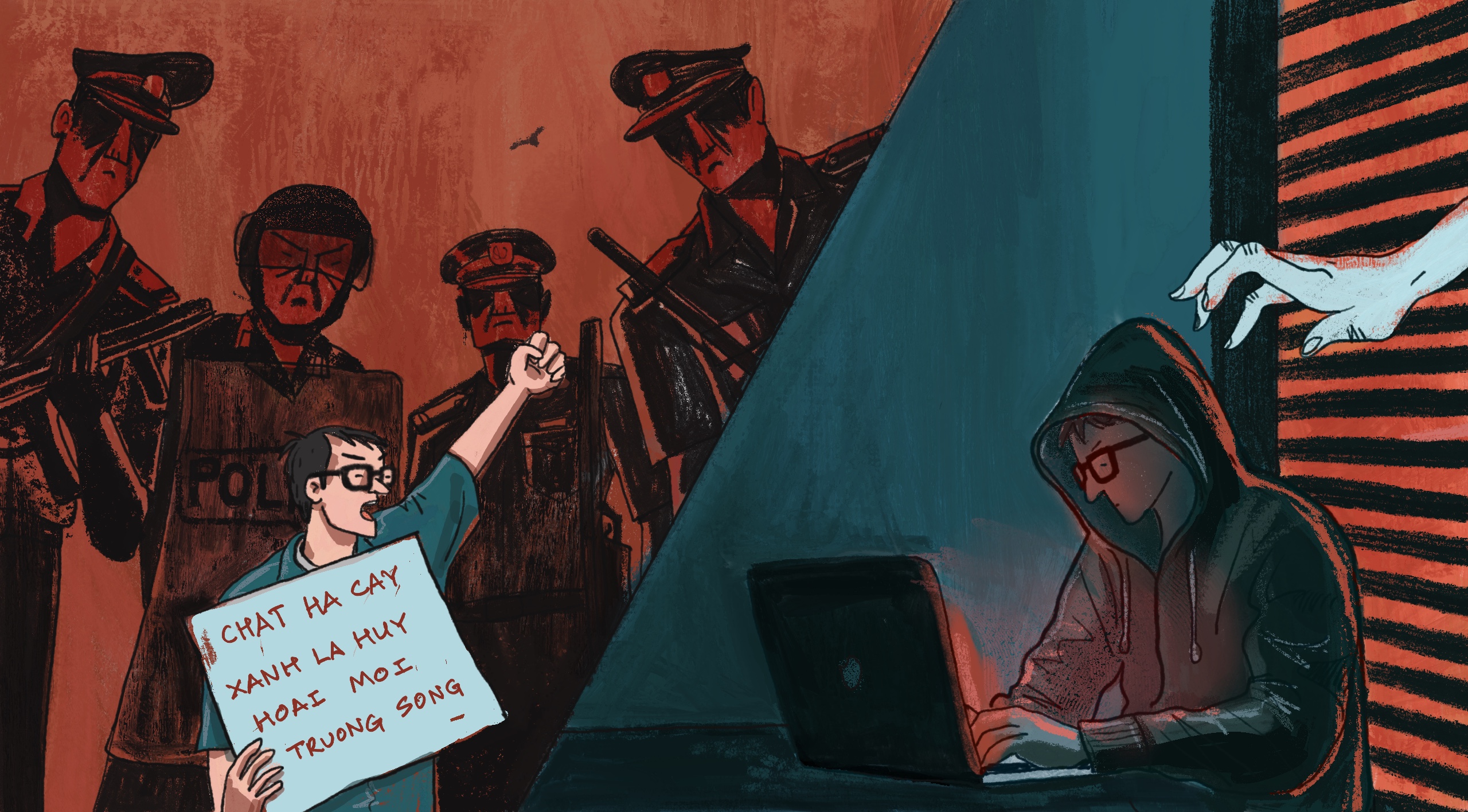
Vietnamese activists’ dilemma: Go public and risk reprisals, or go undercover and go it alone
Arrests of high-profile campaigns suggest that even those working on government-approved green initiatives with international backing aren’t safe from Vietnam’s crackdown on environmental activism. But some warn that staying below the radar can be even more dangerous.

Capulálpam de Méndez: A struggle for land and memory
After a Canadian mining company challenged a Zapotec community’s Indigenous identity, recalling the ancestral names of sacred landmarks helped reinvigorate their connection to the land – and defend it from extractive industries.

San Pedro Sochiapam: First the birdsong, then the whistles
In a remote community enveloped in cloudforest, a whistled form of the Indigenous Chinantec language is perfectly adapted to the land and its weather. But who needs whistles when you can use WhatsApp?

Sierra Mixe: A conversation with Mother Nature
Medicinal wisdom is embedded in Indigenous Mixe languages. By sustaining their mother tongue and practices involving herbs and healing rituals, Mixe people keep alive a cosmovision in which they speak to Mother Earth.
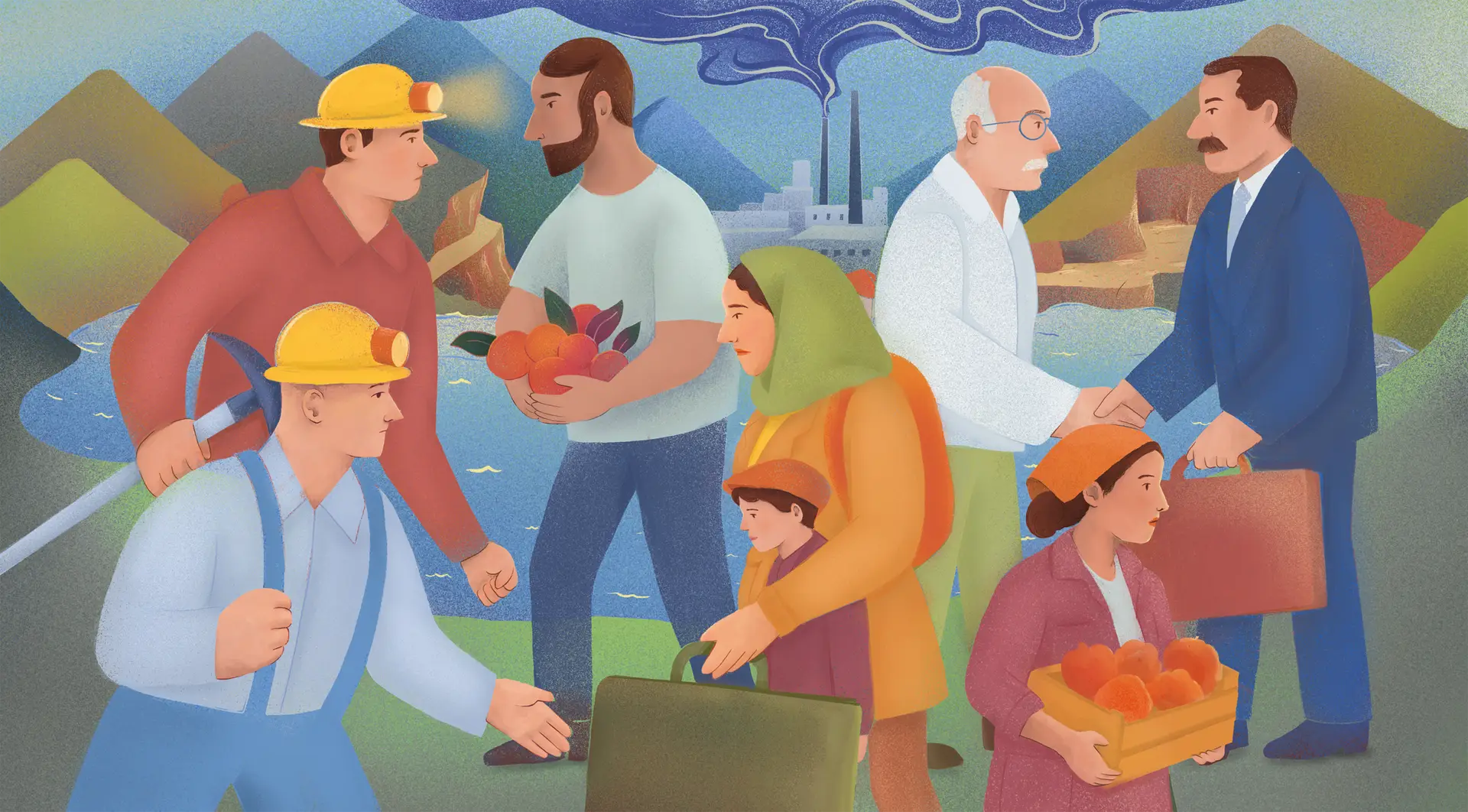
Foreign capital, local burden: Who benefits from mining in Bosnia?
When foreign companies restarted mining operations that had been shuttered since the breakup of Yugoslavia, Vareš had high hopes of economic revival. But as the state fails to take a stand against pollution and deforestation, optimism has given way to nostalgia for the socially owned mines of the communist era.

